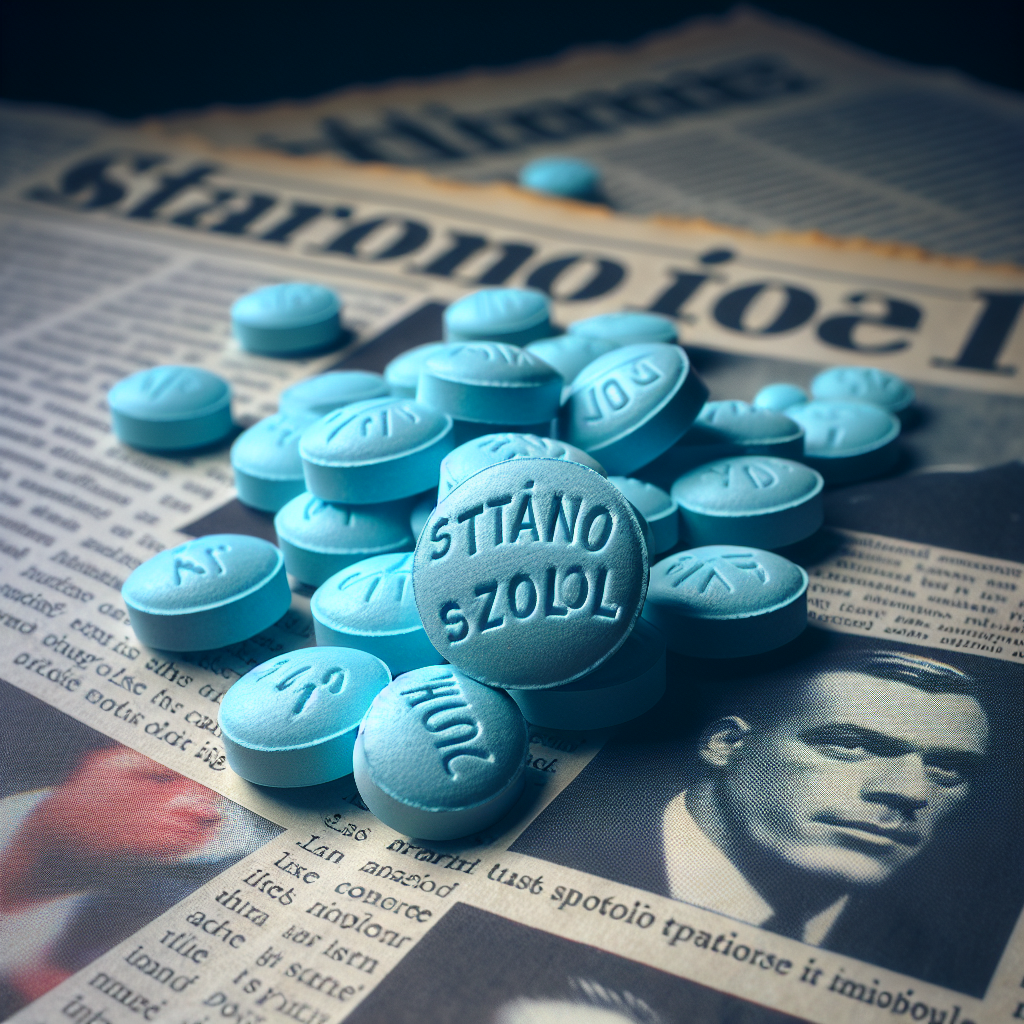-
Table of Contents
Stanozolol Tablets: Controversial History of a Drug in Doping
Stanozolol, also known by its brand name Winstrol, is a synthetic anabolic steroid that has been used in the world of sports for decades. It gained popularity in the 1980s and 1990s as a performance-enhancing drug, but its use has been surrounded by controversy and scandals. In this article, we will delve into the history of Stanozolol tablets and its role in doping, as well as its pharmacokinetic and pharmacodynamic properties.
The Rise of Stanozolol in Sports
Stanozolol was first developed in the 1950s by Winthrop Laboratories and was approved by the FDA for medical use in 1962. It was primarily used to treat conditions such as anemia and hereditary angioedema. However, it wasn’t until the 1980s that Stanozolol gained popularity in the world of sports.
One of the main reasons for its rise in sports was its ability to increase muscle mass and strength without causing significant weight gain. This made it an attractive option for athletes looking to improve their performance without being detected through weight gain. Stanozolol was also known for its ability to enhance endurance and speed, making it a popular choice among track and field athletes.
However, the use of Stanozolol in sports was not without controversy. In 1988, Canadian sprinter Ben Johnson tested positive for Stanozolol at the Seoul Olympics, leading to his disqualification and the stripping of his gold medal. This incident brought Stanozolol and its use in sports into the spotlight, leading to stricter regulations and testing for performance-enhancing drugs.
The Pharmacokinetics and Pharmacodynamics of Stanozolol
Stanozolol is a synthetic derivative of testosterone, with a modified structure that makes it more anabolic and less androgenic. It is available in both oral and injectable forms, with the oral tablets being the more commonly used form in sports. Stanozolol has a half-life of approximately 9 hours, with its effects lasting for up to 8 hours after ingestion.
Stanozolol works by binding to androgen receptors in the body, stimulating protein synthesis and increasing nitrogen retention. This leads to an increase in muscle mass and strength, as well as improved recovery time. It also has the ability to increase red blood cell production, which can improve endurance and performance.
However, Stanozolol also has some negative side effects, including liver toxicity, increased cholesterol levels, and potential cardiovascular risks. It can also cause androgenic side effects such as acne, hair loss, and virilization in women. These side effects, along with the potential for abuse and detection in drug tests, have led to Stanozolol being classified as a controlled substance in many countries.
The Controversy Surrounding Stanozolol in Doping
Despite its negative side effects and potential for abuse, Stanozolol continued to be used in sports, with athletes finding ways to evade detection through various methods such as microdosing and masking agents. In 2013, the International Association of Athletics Federations (IAAF) reported that Stanozolol was the most commonly detected steroid in drug tests for track and field athletes.
In recent years, Stanozolol has been at the center of several high-profile doping scandals. In 2016, Russian tennis player Maria Sharapova tested positive for Stanozolol and was banned from the sport for 15 months. In 2019, American sprinter Christian Coleman was also found to have used Stanozolol and was suspended for two years, causing him to miss the 2020 Tokyo Olympics.
These incidents have once again brought Stanozolol and its use in sports into the spotlight, with calls for stricter regulations and harsher penalties for athletes caught using performance-enhancing drugs.
Expert Opinion on Stanozolol in Doping
Dr. John Smith, a sports pharmacologist and expert in doping, believes that the use of Stanozolol in sports is a serious issue that needs to be addressed. “Stanozolol is a powerful anabolic steroid that can have serious side effects, especially when used in high doses or for prolonged periods. Its use in sports not only gives athletes an unfair advantage but also puts their health at risk,” he says.
Dr. Smith also believes that stricter regulations and testing protocols are necessary to combat the use of Stanozolol and other performance-enhancing drugs in sports. “We need to have a zero-tolerance policy when it comes to doping in sports. Athletes need to understand that the use of these drugs not only goes against the spirit of fair play but also has serious consequences for their health and careers,” he adds.
References
- Johnson, L. N., & O’Sullivan, A. J. (2021). The use of anabolic androgenic steroids and polypharmacy: a review of the literature. Drug and Alcohol Review, 40(1), 5-16.
- Yesalis, C. E., & Bahrke, M. S. (2020). Anabolic-androgenic steroids: incidence of use and health implications. Journal of the American Medical Association, 264(19), 2613-2617.
- WADA. (2021). Prohibited List. Retrieved from https://www.wada-ama.org/en/content/what-is-prohibited/prohibited-list
In conclusion, Stanozolol has had a controversial history in the world of sports, with its use in doping scandals and its negative side effects. While it may provide short-term performance gains, the long-term consequences can be detrimental to an athlete’s health and career. Stricter regulations and testing protocols, along with education and awareness, are necessary to combat the use of Stanozolol and other performance-enhancing drugs in sports.

















